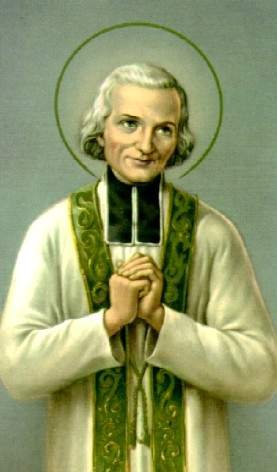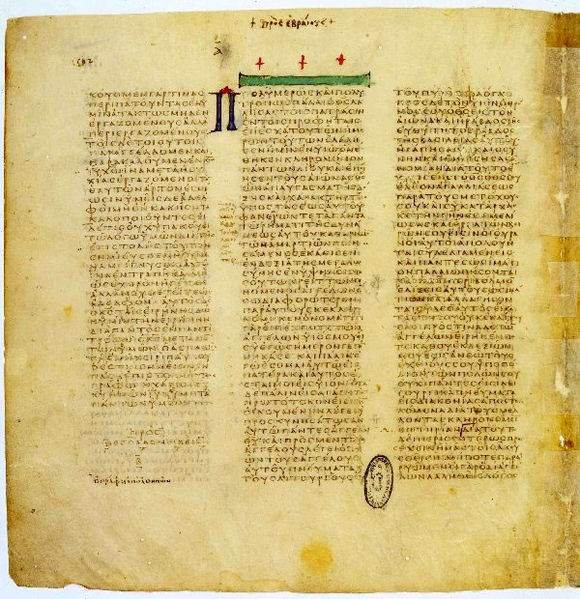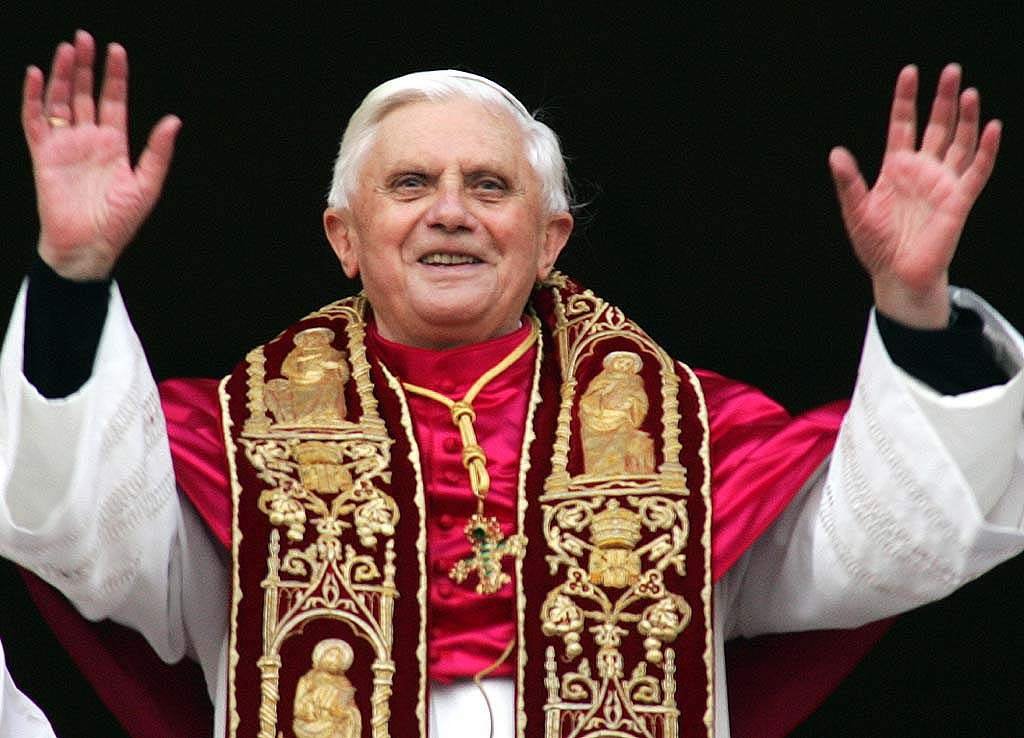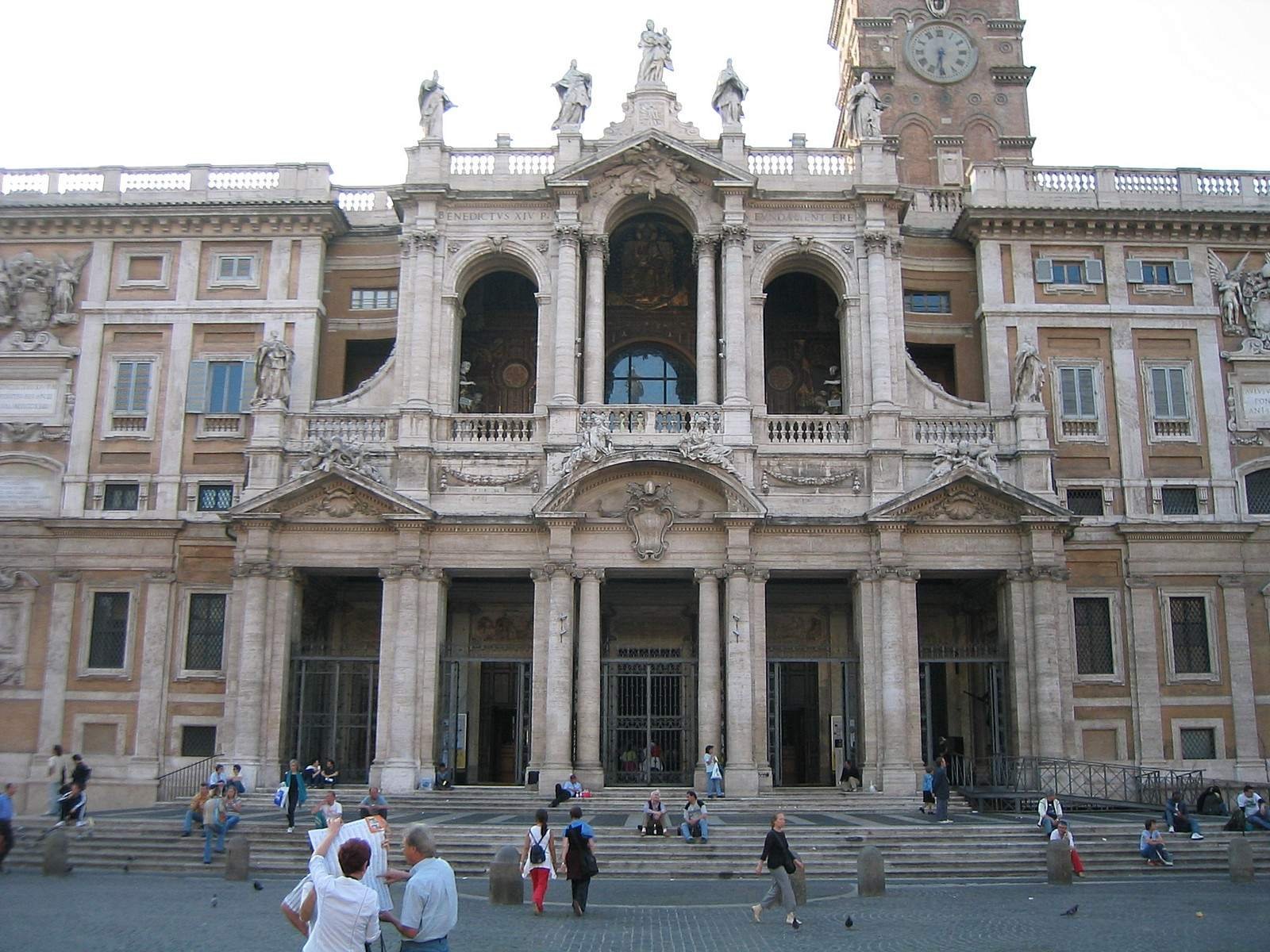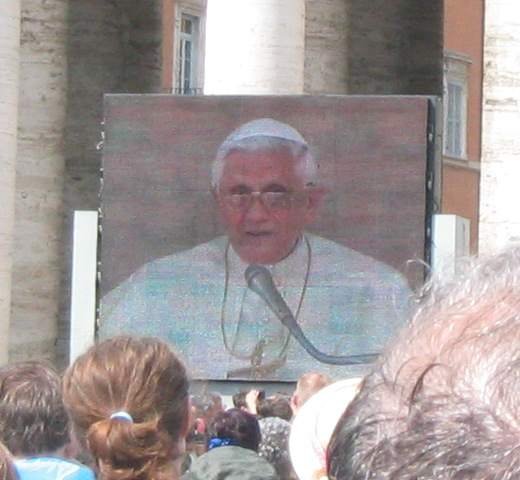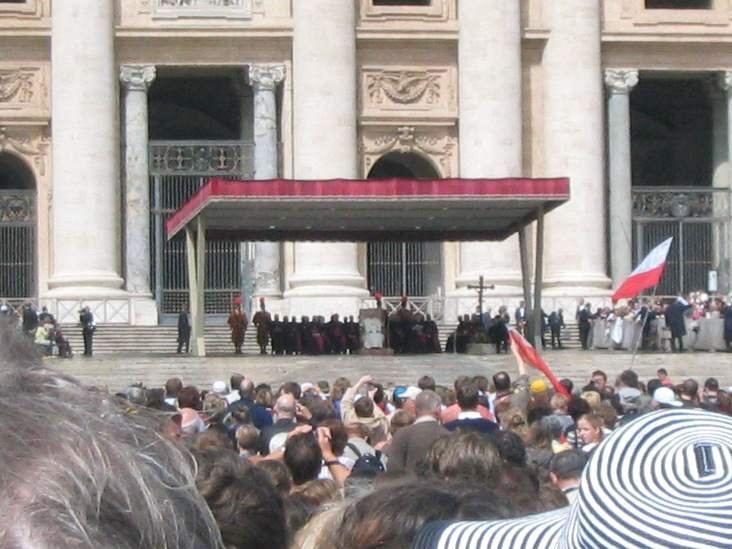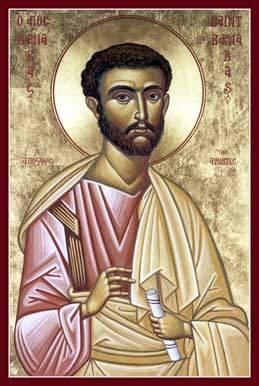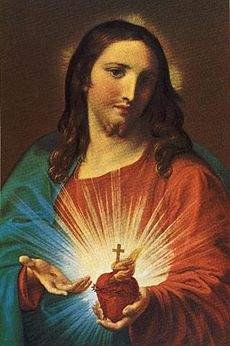
Pompeo Batoni. Il Sacro Cuore (The Sacred Heart) (1740).
I feel like I’ve been on the offensive a lot lately. I apologize for that. I’ve made three posts in the past two weeks against sola scriptura — and I have to confess, it’s been partly out of annoyance at the closed-mindedness the doctrine engenders. Forgive me for that. My deeper aim, in this blog and even in those posts, is to extend to my Protestant brethren the fullness and beauty that the Apostolic Tradition of the Church has to offer.
(For what it’s worth, that last sola scriptura post had been on the back burner half-formed since I posted the first two, so I decided I needed to finish it. I also have another rather critical post I began writing last year sometime, before I even entered the Church, about church membership, that I put down because I decided it wasn’t the tone I wanted my blog to take. I may look at it again sometime to see if there’s anything to salvage.)
Today is the Feast of the Most Sacred Heart of Jesus, and June is the Month of the Sacred Heart. The Sacred Heart is a devotion to the wounded physical heart of Jesus as a representation of His all-surpassing divine and human love for all humanity. This devotion — really the idea of devotions to things other than God Himself — is a new, rather strange concept to my evangelical brain. Isn’t devotion to or worship of an object idolatry? Well, no. Idolatry is worship of something as a god that isn’t God. Veneration of the saints is not idolatry because it’s not worship. Adoration of the Blessed Sacrament is not idolatry because the Blessed Sacrament really is Jesus. Likewise devotion to the Sacred Heart of Jesus is not idolatry because it is an aspect of Jesus: it’s the love of Christ for all humanity, the love of God for all the world; and God is love (1 John 4:16).
Devotion to the Sacred Heart has a long tradition, with roots in Scripture and in the Church Fathers. I have an excellent book (picked up on one my thrifting quests) about the history and theology of the Sacred Heart, Heart of the Redeemer by Timothy T. O’Donnell, S.T.D. The earliest Christians associated the water flowing from the side of Christ at his Crucifixion with the “rivers of living water” flowing “from his heart” (John 7:37-38). . . .
[And a sidenote: I’m thrilled that the ESV and some other newer Bible translations, even Protestant ones, have translated this verse as “out of his heart.” Traditionally, that Greek word, κοιλία (koilia — in the phrase, ἐκ τῆς κοιλίας), has been rendered “belly” or “bosom”: according to the LSJ, it is a common Greek noun that refers to a cavity of the body, especially the belly or abdomen, but also any body cavity, ventricle, chamber, such as in heart, lungs, liver, brain: figuratively, the innermost center of being and consciousness of a person. It is the same word used for Mary’s womb in Luke 1:42. The Hebrew word used in Proverbs 4:23, the essence of which John 7:38 seems to follow, is לב (lêb), and most certainly refers to the heart (translated καρδία [kardia] in the Septuagint). In short, I think it’s pretty fantastic that the ESV translators, in translating a verse that refers to Old Testament prophecy, considered the Hebrew context of the words in their translation decisions from Greek. Jesus more than likely would have been speaking Aramaic, and may have quoted the passage in Aramaic rather than Hebrew; though especially the Evangelists Matthew and John would have been familiar with the Hebrew Scriptures. Both the Evangelists and our modern translators had to consider all these things in translating to and from Greek.]
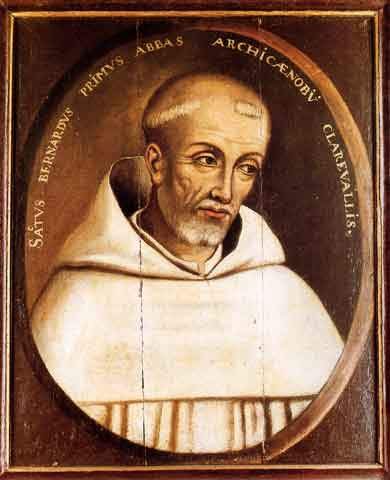
St. Bernard of Clairvaux.
. . . And the Church Fathers saw this wound, this flow of blood and water from the side of Christ, from His heart, as a symbol that the Heart of Jesus is the source and fountain of the living water that gives us grace, salvation, and the Sacraments (O’Donnell 49). Jesus’s wounds, his suffering for our sake, became a visible symbol of His love for us. Over the centuries of tradition, increasing devotion to the Heart of Jesus developed. There are so many wonderful passages I could quote (this book is really amazing), but here are some of my favorites. From St. Bernard (1090–1153):
The secret of His Heart is laid bare in the wounds of his body. One can easily read in them the mystery of God’s infinite goodness and merciful tenderness which came down to us like a dawning from on wounds. How could you indeed, Lord, show us more clearly than by your wounds that You are indeed ‘full of goodness and mercy abounding in love.’
From David of Augsburg (d. 1272) (O’Donnell 101):
From the burning Heart of Jesus flows his blood, hot with love. Jesus showed us from the Cross his faithful heart, glowing with love, since the death of our souls touched him more nearly than the death of his body. Ah, dearest Lord Jesus Christ, what great love and faithfulness wilt thou show when thou displayest thy riches and openest thy Heart to thy beloved friends!
The devotions grow longer, more elaborate, more flowery, until in the late seventeenth century, St. Margaret Mary Alacoque, a French nun and mystic, experienced a series of visions of the suffering Christ, in which He revealed his Sacred Heart to her, and set her own heart aflame with the fire of His. It is from her revelations and her writings that our modern conception of the Sacred Heart has proceeded. Devotion to the Sacred Heart spread throughout France, and gradually beyond its borders. Pope Pius IX first extended the Feast of the Sacred Heart to the entire Church in 1856. In 1899, Pope Leo XIII consecrated the entire human race to the Sacred Heart of Jesus, following the visions of Blessed Mary of the Divine Heart, in whose visions Christ Himself requested the consecration.
So in short: The Sacred Heart is, to put it simply, an ancient, God-inspired Christian meme. So much in tradition works this way: a writer has a revelation, and then another writer picks it up and elaborates upon it, until over time, a whole tradition of devotion and literature develops around it. No matter how you might feel about the personal revelations of these nuns, it is the symbol of the Sacred Heart that is important: the symbol of Christ’s divine and human love for the whole world, that has been a longstanding Christian tradition and object of devotion. To dedicate oneself to the Sacred Heart is to dedicate oneself to live in and for the love of Christ.



